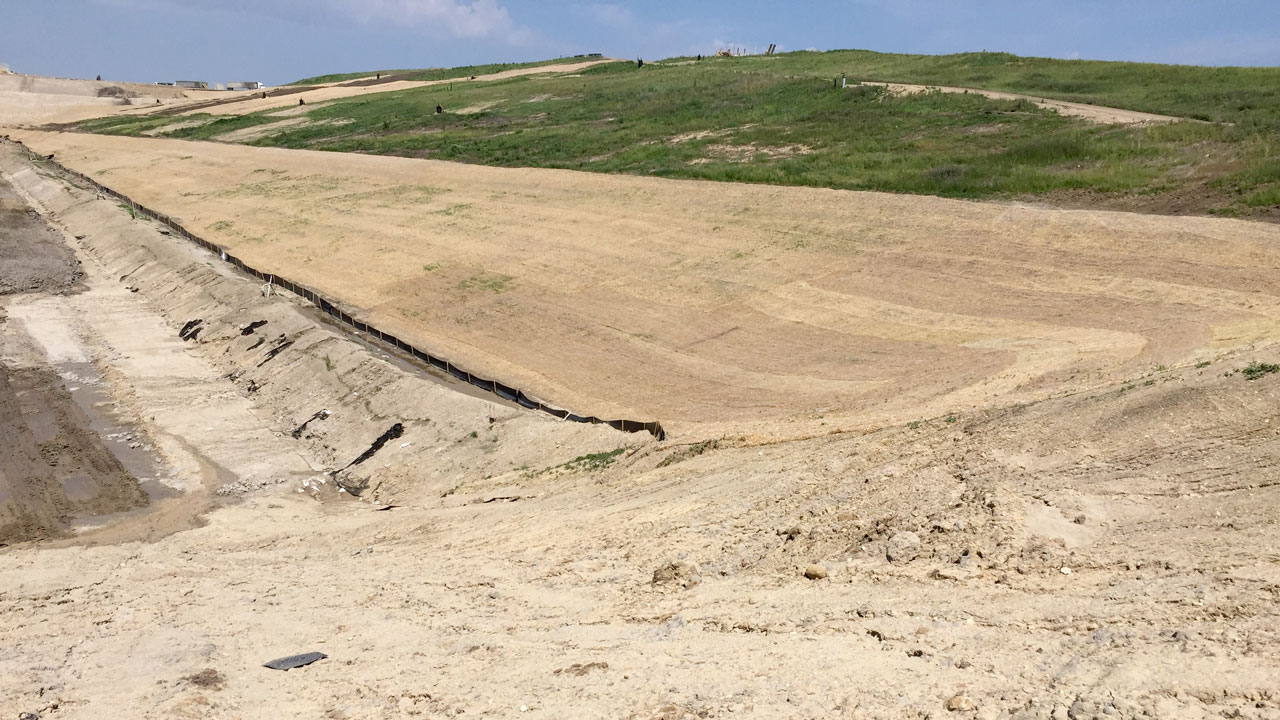
All opinions expressed in this post are the author’s own.
When it rains it usually pours—and when you are on a tight construction schedule, minimizing weather-related construction delays is imperative. Begin by identifying and implementing effective stormwater and sediment erosion control measures during the construction planning phase for a landfill cell. These measures will help reduce cleanup time and get you back to productive work as soon as practical.
Landfill cell construction typically involves mass excavation to achieve base grades lower than existing grade, which creates a potential pond. The elevation to which adjacent cells have been filled and the area of the tributary to the proposed cell may increase the potential volume of water within the construction area. Good stormwater measures will minimize the amount of off-site area tributary to the cell area, which will minimize pumping—if the areas outside the work area can now be diverted away.
Below are some tips for reducing stormwater run-on in the construction area and the mess that comes with it.
Stormwater diversion berms
Diversion berms are constructed across the side slope to collect and divert runoff away from the construction area below. Typically, the cross-section above the diversion berm resembles a v-shaped channel. The berm is designed to have stable side slopes and constructed from compacted, clay-rich soil. The cross section slope conforms to the existing side slope, and soil is bermed up to create the desired channel depth against the side slope.
A one-size-fits-all approach does not work. I recommend confirming and sizing the berm based on Manning’s equation, using the calculated flow generated from the design storm in the contributing drainage area. The desired channel lining (riprap, grass, turf-reinforced matting) should then be evaluated and checked against the design velocity. I recommend confirming the diversion berm capacity based on the tributary drainage area and design storm rainfall event.
Be sure to visually inspect the berms during construction and repair any cracks and any low points in the top of the berm that you notice. These will be the areas that water will likely breach and wash out sections of the berm during a significant rainfall event.
Side slope stabilization
Side slope stabilization is important, because the existing side slope may have a long slope length, and protecting the side slope reduces erosion and sedimentation deposited at the base. Top soiling, seeding, and erosion control blanketing are good ways to protect the side slopes. This also will provide future protection to the leachate system components, including the granular drainage layer and filter fabric if exposed for a long period of time. This level of protection will prevent siltation and clogging that might require replacement of these materials after earthwork construction. Side slope stabilization also helps reduce sediment build up in the diversion berms. An eroded sideslope is pictured at the top of this page.
Temporary containment berm
The area adjacent to the cell construction likely is or will be over-excavated to accommodate a sedimentation basin and overbuild of the cell. In cases where a cell is partially built, implementing additional measures to keep water out of the cell is vital. One good way of doing this is by constructing a containment berm. Be sure to confirm the required storage volume to determine the maximum containment berm height. Providing sufficient freeboard will allow more stormwater runoff to be detained and be pumped out later.
Summing it up
Erosion and sedimentation control measures are important in the construction process. Consider diversion berms, side slope stabilization measures, and temporary containment berms to save time in the long run—and keep construction on track.
About the author
David Sonne
David Sonne is a project manager with more than 14 years of professional experience in design, permitting, and construction of commercial and environmental facilities.
He is responsible for technical direction and management of solid waste facility design, compliance, permitting, and stormwater management projects.